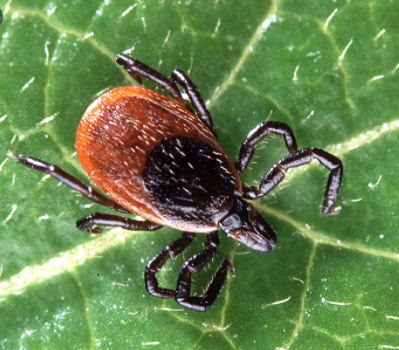THUNDER BAY — It's later than previous years, but tick season has begun in the Thunder Bay area.
Local residents are now spotting them on their pets.
Most ticks found in the Thunder Bay district are wood ticks.
It's the blacklegged variety that people need to be concerned about, because the city and surroundings are considered a risk area for Lyme disease.Blacklegged ticks can carry the bacteria that causes the disease, which is transmitted to humans through a bite, leading to a variety of potentially serious health conditions.Ken Deacon, coordinator of the vector-borne disease program for the Thunder Bay District Health Unit, says this winter's heavy snow may have helped ticks survive into the spring.
"I think the snow probably insulated the ticks from the cold weather. And although it's been a late spring, they are active...Blacklegged ticks are really, really hardy. They are built for the north and are active pretty well above 0 Celsius," he said.TBDHU recently activated its annual active surveillance program, which involves pulling a white cloth sheet through grass in likely areas of infestation around the city.One of the primary areas of interest for the summer student hired to do the work will be Rabbit Mountain in the Belrose Road area.Because they have been relatively prevalent there in recent years, Deacon calls Rabbit Mountain "the tick magnet."
"They can be basically be anywhere, but Rabbit Mountain is really the only area that we've consistently surveyed. I have no idea why, but conditions there seem to have allowed the establishment of blacklegged ticks and they are doing well."Last year, after a relatively mild winter and early spring, 79 ticks were submitted to the health unit by members of the public for identification, nearly double the number that was turned in the previous year.
More significantly, however, the number of wood ticks submitted as opposed to blacklegged ticks went down, "therefore, the proportion of blacklegged ticks within the community increased," Deacon said.He speculated that that could simply be the result of people becoming more aware of the difference between the two types, and knowing that TBDHU is only interested in receiving the blacklegged variety.Because of more limited access to lab testing, only ticks captured by the health unit's own active surveillance program were tested for Lyme disease last year.
Nearly two-thirds of them were infected with Lyme disease bacteria.
Deacon advises local residents to wear protection "Go out and enjoy yourself. Be aware that ticks are present. The ones that are easy to see are the adults. There's a smaller stage that is present throughout the entire summer, so don't give up watching for them."
More information is available on the TBDHU website.
